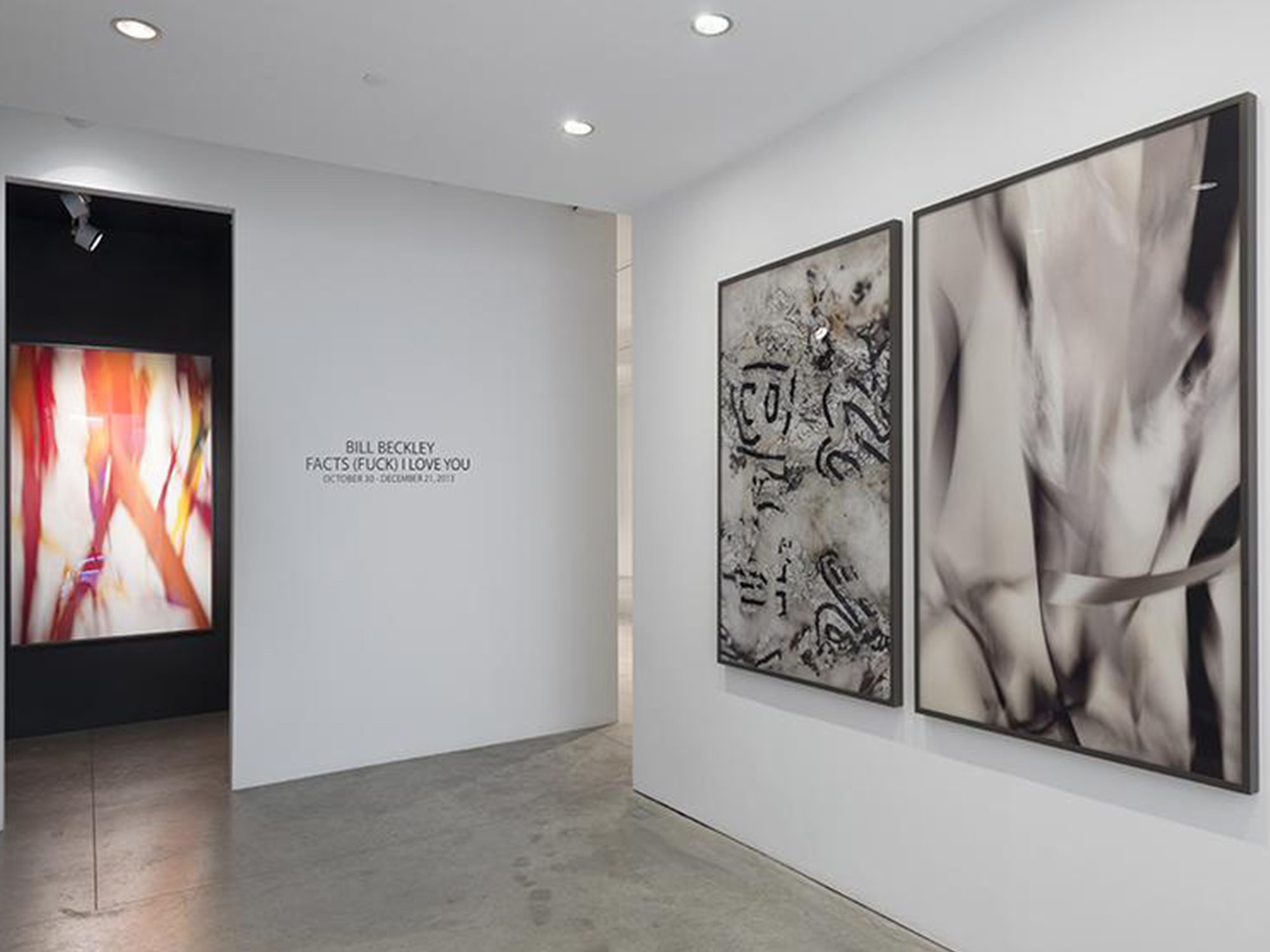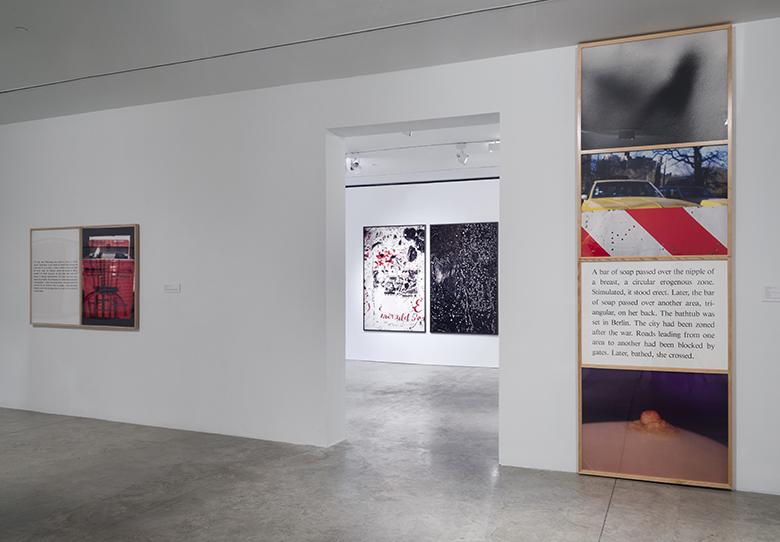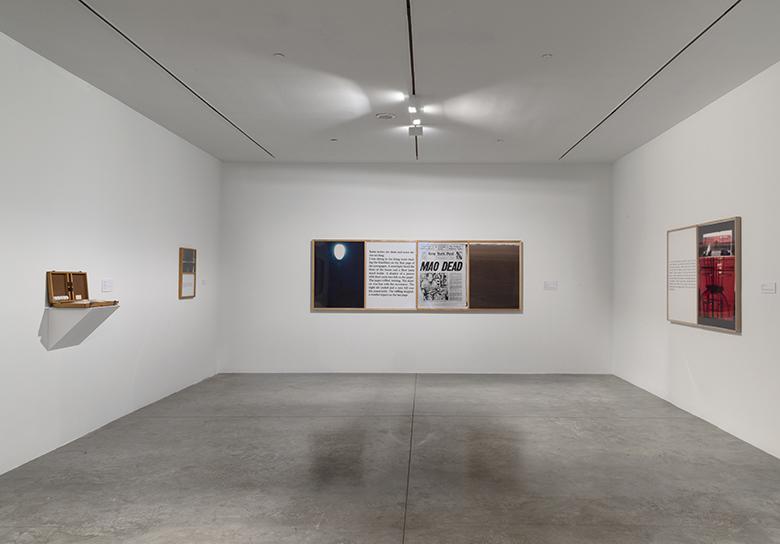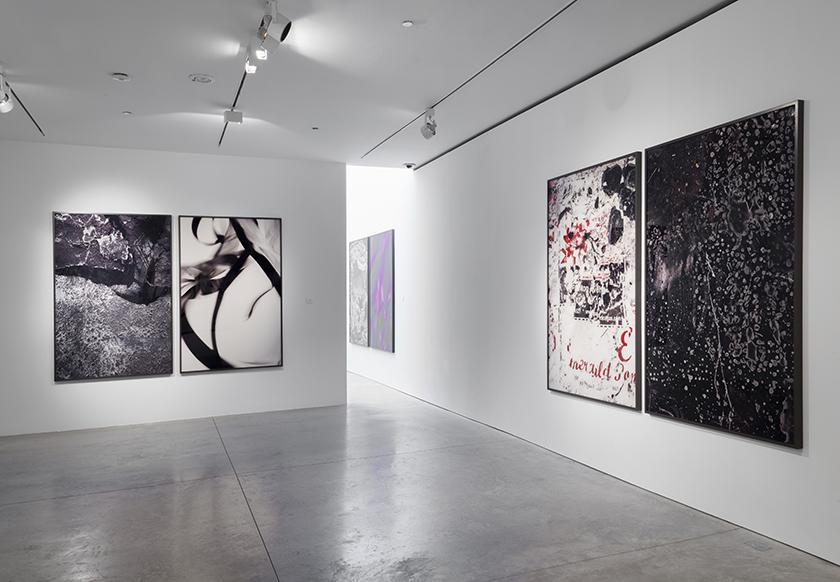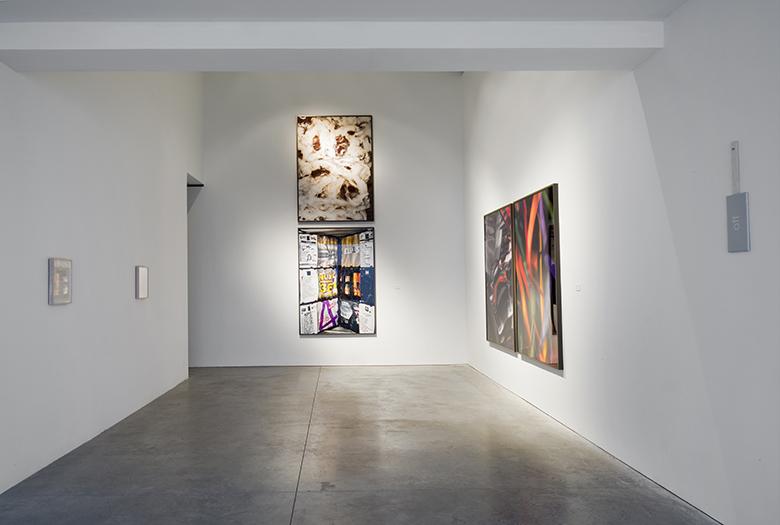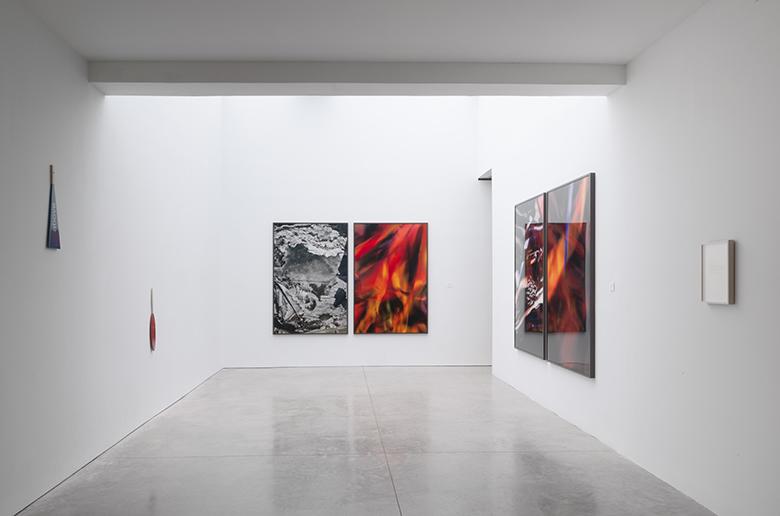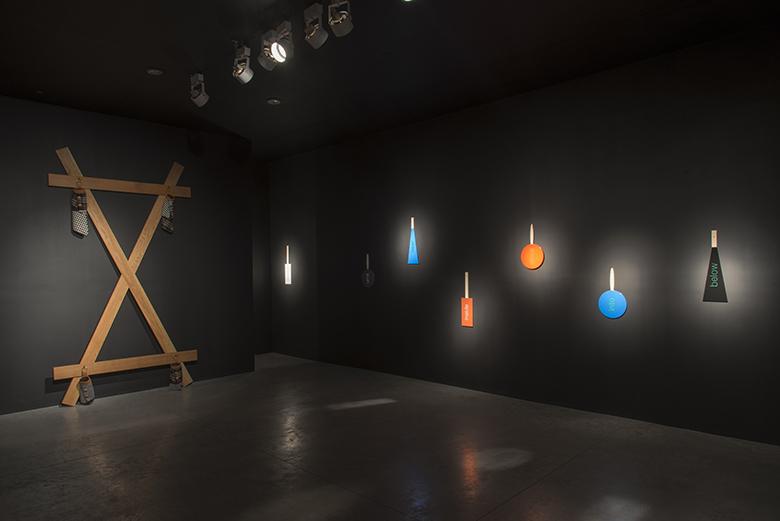Bill Beckley has always been transfixed by the notion of the sublime. Since his early 1970s performances at the seminal art space “112 Greene”, where a rooster was installed over his bed, Beckley has defined sublime as “the loss of self, which first must be acquired… through the impulses, memories, principles and energies that evolve into a sense of self.”* For Facts (Fuck) I Love You, his first exhibition at Friedman Benda, he explores the sublime through a series of diptychs where he powerfully juxtaposes narrative and imagery in order to access avenues to exalted states.
In Beckley’s world, notions of narrative are expansive: scratches on walls, spinning stems, remnants of molten receipts, crushed circuit boards, or simply typed texts. The fragments become vocabulary, raw code from which to extract threads of meaning. When paired, a key element of the work in Facts (Fuck) I Love You, his photographs form a spontaneous narrative; discarded toys are crushed alongside body parts, ribbons and reflections of pedestrians dance beside strewn detritus. Their duality leads to a third, disparate emotion: sometimes uncomfortable, at other times tender, but remarkably separate from the subject matters from which it is born.
Narrative art, a term coined by John Gibson upon presenting Beckley’s work at his New York gallery in 1974, invokes the power of word and story as an additional element to visual practice. During the early era of conceptual art, Beckley exemplified this with Washington Crosses the Delaware, 1969, where his self-charted path through the river coincidentally overlapped with George Washington’s trip over two centuries prior. He embraced the poetry of pairing multiple thoughts throughout the ‘70s, when he was best known for marrying typed fictions with borrowed photographs, such as The Three Bears, 1974, a historic work also shown in Facts (Fuck) I Love You. He carried this sensibility through subsequent bodies of work in the 1970s-2000s. In new pieces, he frames remnants of charred text with the grace of rippling ribbons, allowing his photography to transcend the objects’ reality.
Today, his return to text is remarkable, and it has transformed. Whereas Beckley often authors his own tales, the randomized natural environment now pens the fictions of Facts (Fuck) I Love You. The stories the text tells us are also written by us, in our reactions, as Beckley is never divorced from the phenomological ramifications of his work. Still, in effect, it is Beckley who orchestrates through these diptychs, purposefully sparking emotion, whether disturbing, sexually charged, quaint, nostalgic, or poetic.
Bill Beckley has shown his work in galleries and museums throughout Europe, Asia, and the United States since the early seventies. The current exhibition at Friedman Benda will include historical and recent work.
Bill Beckley’s photographs have been included in the Paris Biennale, The Venice Biennale, Documenta, and The Whitney Biennial. His work is in the collections of the Whitney Museum; The Museum of Modern Art; The Guggenheim, New York; the Smithsonian American Art Museum, Washington DC; The Daimler Collection, Stuttgart; The Hoffman Collection, Berlin, and the Tate Gallery, London.
